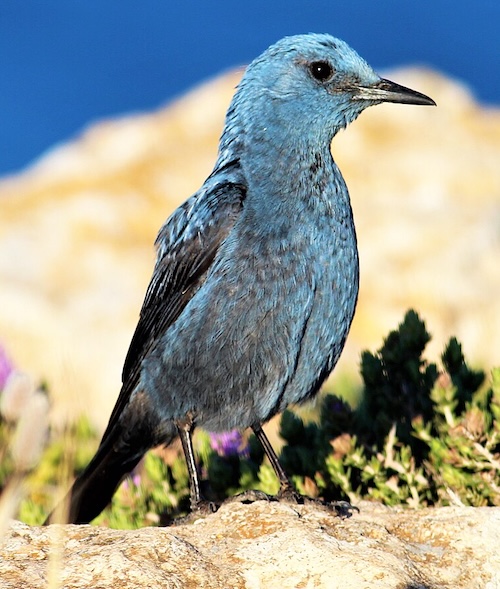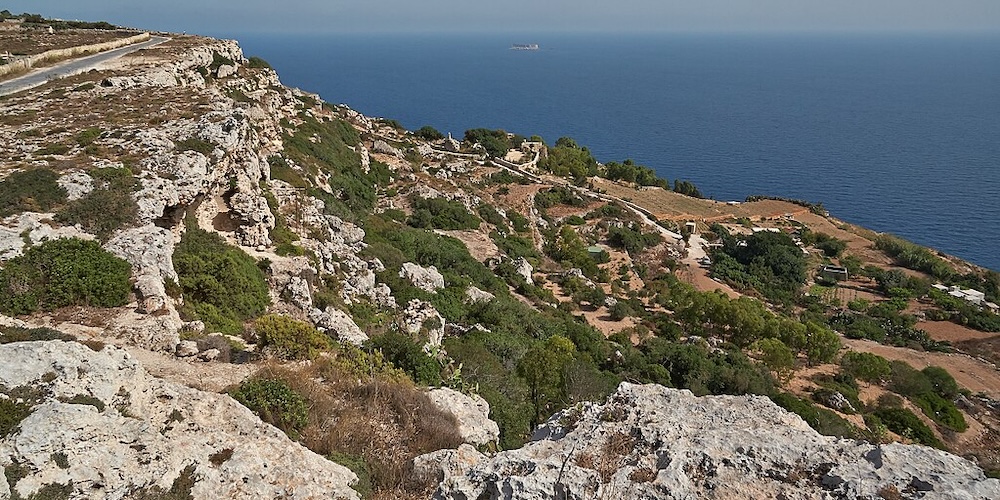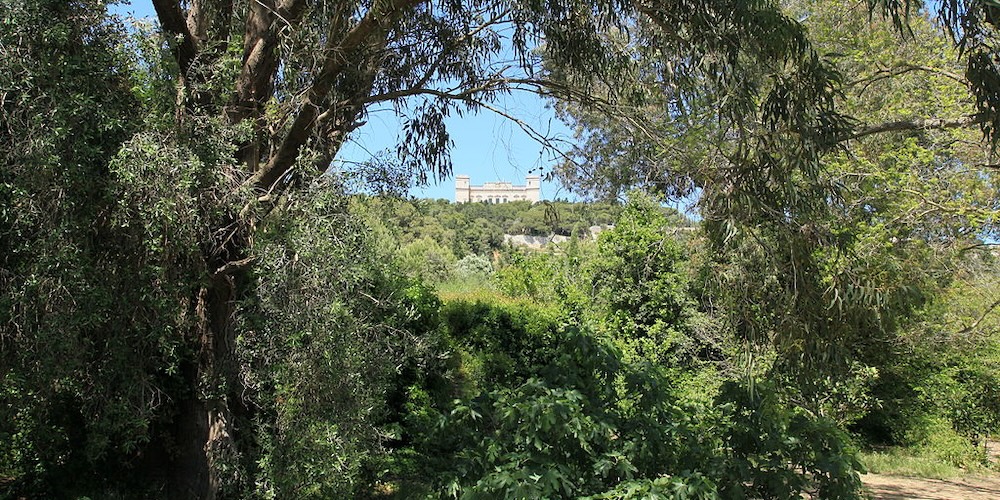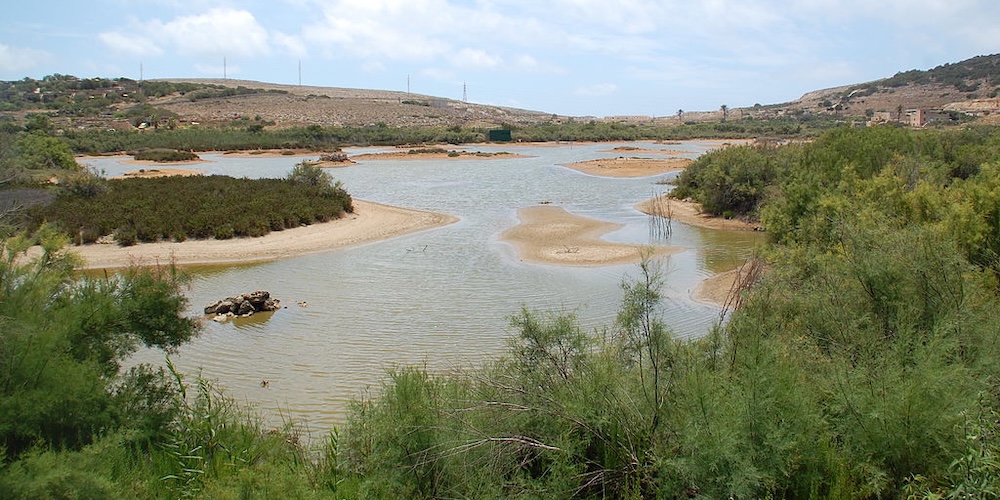Republic of Malta

Malta is an island country in Southern Europe located in the Mediterranean Sea, between Sicily and North Africa. It consists of an archipelago 80 km (50 miles) south of Italy, 284 km (176 miles) east of Tunisia and 333 km (207 miles) north of Libya. Only the three largest islands – Malta, Gozo and Comino are inhabited. Over 70% of people live on the island of Malta. They lie on the Malta plateau, a shallow shelf formed from the high points of a land bridge between Sicily and North Africa that became isolated as sea levels rose after the last ice age. The two official languages are Maltese and English. The country’s capital is Valletta, which is the smallest capital city in the EU by both area and population. It was also the first World Heritage City in Europe to become a European Capital of Culture (2018). With a population of about 542,000 over an area of 316 km2 (122 square miles), Malta is the world’s tenth-smallest country by area and the ninth most densely populated. It is actually even denser in as much as 1.6 million tourists visit each year. Various sources consider the country to consist of a single urban region, for which it is often described as a city-state.
Numerous bays along the indented coastline of the islands provide good harbours. The landscape consists of low hills with terraced fields. The highest point in Malta is Ta’ Dmejrek, at 830 feet, near Dingli. Although there are some small rivers at times of high rainfall, there are no permanent rivers or lakes on Malta. However, some watercourses have fresh water running all year round at Baħrija near Ras ir-Raħeb, at l-Imtaħleb and San Martin, and at Lunzjata Valley in Gozo. Phytogeographically, Malta belongs to the Liguro-Tyrrhenian province of the Mediterranean region within the Boreal Kingdom belonging to the terrestrial ecoregion of Tyrrhenian-Adriatic sclerophyllous and mixed forests.

Ta’ Dmejrek – ©C T Johansson CC BY 3.0 via Wikimedia Commons
The climate is typically Mediterranean with hot, dry summers and very mild, rather moist winters (occasionally not so moist). Rain occurs mainly in autumn and winter, with summer being generally dry. The average yearly temperature is around 23 °C during the day and 15.5 °C at night. In the coldest month – January – the typical maximum temperature ranges from 12 to 18 °C during the day and minimum 6 to 12 °C at night. In the warmest month – August – the typical maximum temperature ranges from 28 to 34 °C (during the day and minimum 20 to 24 °C at night. Amongst all capitals in the continent of Europe, Valletta – the capital of Malta has the warmest winters. The annual average relative humidity is high, averaging 75%, ranging from 65% in July to 80% in December.
Birding Malta
Habitat
Most types of habitat found in Malta are pretty much disturbed, and consist of cultivated land (44%); maquis (2.8%); garigue (12%) (including maritime); steppe (2%); cliff side (2%); clay slopes (0.5%); boulder screens (0.5%) and afforested areas (1.2%). The remaining 29% is built up and roads. Afforested areas or woodland is a rare habitat due to human interference and few patches of native forest remain. Some areas have been planted, but are now regenerating on their own. Most typical trees found here are evergreen oak and Aleppo pine.

Garigue – ©Christian Formosa via Wikimedia Commons
Maquis is found mainly along valley sides. It is a habitat of mainly small trees and large shrubs. It is a more sheltered environment with deeper soil and more water. Typical trees include olive, carob, lentisk, bay laurel and ‘bear’s breeches’. Garigue is a widespread habitat, which develops on karstland or as a result of a degraded maquis. It is an exposed habitat with little soil and sparse water. This is a habitat dominated by low vegetation, especially hardy aromatic shrubs. There are three types of plants: annuals, which grow in winter and spend the summer as seeds; geophytes, which are perennial plants with a dormant stage as bulbs and evergreen, which are perennials which live throughout but must be adapted. Typical plants include Mediterranean heath, wild thyme, olive-leaved germander, Maltese spurge, rock roses and Maltese pyramidal orchid.
Steppe is an unstable and difficult environment. There are two types: natural and man-made. The natural steppe is generally made up of clay slopes. The typical plant is esparto grass. The man-made is habitat once exploited by man such as abandoned fields and overgrazed garigue. Coastal and inland cliffs are, so to speak, vertical garigue. There is hardly any soil or water. Here plants occupy small ledges and cracks and are typically small shrubs. Plants on the coastal cliffs have to adapt to exposure to salty winds. Inland cliffs, valley sides and fortifications are home to many endemic plants. Typical plants include Maltese salt tree, Maltese rock centaury, Maltese everlasting, Maltese cliff-orache, caper and white snapdragon.

Buskett – ©Frank Vincentz CC BY-SA 3.0 via Wikimedia Commons
Coastal communities are divided into three habitats. Sand dunes a very rare due to human impact and the fact that less than 2% of coastline is made up of sandy beaches. Sand dunes are important for coastal protection and also contain many rare plants (many already extinct). It is an environment where plants have to adapt to drought, salt and shifting sands. The typical tree is the tamarisk and plants include sea holly and sea daffodil. Rocky shores contain patches of shallow and saline soil. Only salt tolerant species of plants survive and these include golden samphire and the endemic Zerapha’s sea lavender. Saline marshland forms a boundary between the marine, freshwater and terrestrial environment. During the wet season rainwater mixes with salt water so becoming brackish. This environment is home to many specialised flora, which include rushes, reeds and golden samphire.
Freshwater is normally found in valleys and watercourses. Valleys are important water catchment areas, but very few watercourses hold water throughout the year. Valleys support a maquis type of vegetation. Typical trees include white poplar, willow and grey elm. Typical plants include great reed and Sicilian squill. Rock Pools form in winter on small depressions found on karstland. Water-crowfoot is atypical plant found in rock pools. Disturbed ground is a very common habitat (unfortunately). Such land has been degraded by human activities. Typical flora includes grasses and annuals, most of which are alien species. Alien species in such habitat include eucalyptus, castor oil tree, crown daisy, cape sorrel and prickly pear.
The Birds
There have been over 400 bird species recorded in Malta including a great number of vagrants. However, there are generally around just 200 species that are recorded each year. If one wants to bird watch in Malta timing is of the utmost importance. It is during migration that good numbers (sometimes large numbers) of birds are seen. Few birds breed on Malta so summer is pretty quiet. Some birds do overwinter in Malta, but these are generally the commoner species. Weather is also a determining factor. This may result in a dream day full of birds or not a single feather for the record.

Cory’s Shearwaters (Crossly ID Guide) – ©Richard Crossley CC BY-SA 3.0 via Wikimedia Commons
Breeding species are few mainly because of human persecution mostly hunting, trapping, and destruction of habitat. However, they include Yellow-legged gull, Cory’s Shearwater, Levantine (Mediterranean) Shearwater, Storm Petrel, Moorhen, Little Ringed Plover, Short-toed Lark, Blue Rock Thrush, Cetti’s Warbler, Zitting Cisticola (Fan-tailed Warbler); Spectacled Warbler, Sardinian Warbler, Reed Warbler, Spotted Flycatcher, Starling, Tree Sparrow, Spanish Sparrow, Chaffinch and Corn Bunting. Other occasional breeders include Little Bittern, Common Kestrel, Short-eared Owl, Turtle Dove, Cuckoo, Woodchat Shrike, Quail, Common Swift, Barn Swallow, House Martin, Tawny Pipit, Black-eared Wheatear, Nightingale, Robin, Great Reed Warbler, Greenfinch, Goldfinch, Linnet and Serin. Peregrine, Barn Owl and Jackdaw are examples of species that used to breed, but have been extirpated. It is during migration that things get going and many species, occasionally in large numbers pass through. Both the spring and autumn passages are of interest.
Hunting and trapping is a very big problem in Malta. Hundreds of thousands of birds are shot and trapped every year. They are shot both from land and from powerboats out at sea, and this is where the larger number are shot. Birdwatching can be somewhat perilous unless you know where to go at the right time as a good number of hunters consider birders as a threat and can be intolerant to say the least. Anybody interested in birding in Malta, should contact a local birder or BirdLife Malta for further information. Maltese birdwatchers and birdwatching organisations need support from British Tourists if the slaughter is ever to end.
When and where to watch birds in Malta
January: Mostly resident and wintering birds. Best birding: Wooded areas, harbours, reserves. Everywhere is rather quiet.
February: Mostly resident and wintering birds. Appearance of first migrants. Best birding: Same as in January.
March: Migration begins, usually starting to peak towards the middle of the month. Highlights include good passages of ducks (mainly Garganeys and Pintails); herons, raptors (mainly Black Kite, Marsh Harrier and Kestrel) and early migrants such as Hoopoes, Cuckoos and Wheatears. Best birding: NW coast for sea watching. Anywhere is good.
April: Peak migration. Anything can be expected. Good number of birds on most days. Best birding: Island of Comino, Ghadira Nature Reserve and Simar Nature Reserve, (mainly because other places are invaded by hunters).

Ghadira Nature Reserve – ©Denis Barthel CC BY-SA 3.0 via Wikimedia Commons
May: Migration starts to dwindle but presence of late migrants can be quite interesting. Best birding: Comino, Ghadira Nature Reserve, Simar Nature Reserve and along the coast for Sea watching.
June: June is one of the quietest months. Only resident and breeding species are found. Occasionally there are some very late migrants. Best birding: Weather hot, birds few. The two reserves and Buskett are the only places worth visiting in the early morning.
July: Breeding birds in full activity. Early autumn migrants start to appear mainly waders. Best birding: The two reserves and places suitable for breeding birds. A night visit to the cliffs in Gozo and the south of Malta is recommended to hear Cory`s shearwater.
August: Breeding birds with fledglings and resident birds. First herons and raptors start to appear. Best birding: Same as above plus sea watching along the eastern coast of Malta.
September: Migration is in full swing. Anything can be expected. Highlights good numbers of raptors with late arrivals during the day trying to roost mostly at a small patch of woodland called Buskett. Best birding: Buskett for raptors especially in the afternoon. Sea watching along the eastern coast.
October: Peak Migration of many birds including the arrival of the first wintering birds. Best birding: Anywhere, but especially along the North Eastern coast.
November: Late autumn migrants pass in good numbers. Wintering birds increase in numbers. Best birding: As above plus the North Western coast.
December: Occasional late migrants and wintering birds much in evidence. Best birding: Woodlands, reserves, harbours and coast.
-
Number of bird species: 426
(As at April 2025)National Bird: Blue Rock Thrush Monticola solitarus
-
Avibase
PDF ChecklistThis checklist includes all bird species found in Malta , based on the best information available at this time. It is based on a wide variety of sources that I collated over many years. I am pleased to offer these checklists as a service to birdwatchers. If you find any error, please do not hesitate to report them. -
BirdLife Malta
PDF ChecklistMalta Rarities and Records Committee -
E-Bird
PDF ChecklistThis checklist is generated with data from eBird (ebird.org), a global database of bird sightings from birders like you. If you enjoy this checklist, please consider contributing your sightings to eBird. It is 100% free to take part, and your observations will help support birders, researchers, and conservationists worldwide. -
Wikipedia
Annotated ListThis is a list of the bird species recorded in Malta. The avifauna of Malta include a total of 426 species. It lies on a major migration route and many species pass through during spring and autumn. Two have been introduced by humans.
-
A Complete Guide to the Birds of Malta
| By Natalino Fenech | Midsea Books | 2010 | Hardback | 448 pages, Colour photos | Out of Print | ISBN: 9789993273103 Buy this book from NHBS.com -
A Photographic Guide to the Birds of Malta
| By Andre F Raine | Langford Press | 2011 | Paperback | 200 pages, colour photos | Out of Print | ISBN: 9781904078289 Buy this book from NHBS.com -
Birds of Europe, North Africa, and the Middle East
| Photographic Guide | By Frédéric Jiguet & Aurélien Audevard | PUP | 2017 | Paperback | 447 pages, 2200 colour photos, colour distribution maps | ISBN: 9780691172439 Buy this book from NHBS.com -
Collins Bird Guide
| By Lars Svensson | Harper Collins | Edition 3 | 2023 | Paperback | 478 pages, 4000+ colour | ISBN: 9780008547462 Buy this book from NHBS.com -
History Of Ornithology In Malta
| By Joe Sultana & John J Borg | BirdLife Malta | 2015 | Hardback | 390 pages, colour & b/w photos, colour & b/w illustrations, colour tables | ISBN: 9789995781866 Buy this book from NHBS.com -
The Breeding Birds of Malta
| By Joe Sultana, John J Borg, Charles Gauci & Victor Falzon | Book Distributors Limited | 2011 | Hardback | 379 pages, 459 colour photos and illustrations, 40 colour maps, colour tables | ISBN: 9789995733148 Buy this book from NHBS.com -
Where to Watch Birds and Other Wildlife in Malta
| By Alex Casha | BirdLife Malta | 2004 | Paperback | 91 pages, b/w illustrations, maps | Out of Print | ISBN: 9789990962017 Buy this book from NHBS.com

Collins Bird Guide
AndroidThe Collins Bird Guide App provides everything you need to identify a species quickly and learn about it thoroughly.
Collins Bird Guide
Apple iOS |Collins Bird Guide 4+ A field guide to Europe NatureGuides Ltd. Designed for iPadOrganisations-
BirdLife Malta
Website57/28 Marina Court, Abate Rigord Street, Ta’ Xbiex XBX 1120 MaltaEmail: info@birdlifemalta.orgTelephone: (+356) 2134764 5/6 -
Committee Against Bird Slaughter (CABS)
WebpageThe Committee Against Bird Slaughter (CABS) has been carrying out bird protection camps on Malta since 2001. -
Life+ Malta Seabird Project
WebsiteThe EU LIFE+ Malta Seabird Project aims to create an inventory of marine Important Bird Areas (IBAs) for three seabird species; Yelkouan Shearwater (Puffinus yelkouan), Cory’s Shearwater (Calonectris diomedea) European Storm Petrel (Hydrobates pelagicus)..... -
Nature Trust Malta
WebsiteNATURE TRUST (MALTA) is a non-profit non-governmental environmental organization working in the Maltese Islands. It is also a privileged partner of World Wildlife Fund (WWF). It was founded on 12th December 1962 under the name Natural History Society of Malta. On the 8th January 1999 a merger of four NGOs took place forming Nature Trust (Malta) as we know it today. These four NGOs are the Society for the Study and Conservation of Nature (SSCN, formerly known as Natural History Society of Malta), Arbor (founded 1989), Verde (founded 1997) and Marine Life Care Group, MLCG. In 2017 NTM became Nature Trust – FEE Malta as the Malta coordinator for the international Organisation Foundation for Environmental Education based in Denmark -
The BirdLife Malta Young Birders Club
WebpageBirdLife Malta Young Birders Club The BirdLife Malta Young Birders Club is an exclusive group within the wider Klabb Ħuttaf. It targets children aged 10 to 15 who are showing interests in birds, birdwatching or nature in general.
Reserves-
*Protected areas of Malta
InformationSatellite ViewInteractive list -
NR Filfla IBA
InformationSatellite ViewFilfla has an area of just 6 hectares (15 acres) and is a crumbling flat-topped limestone plateau surrounded by 60 metres (197 feet) high cliffs. Three species of seabirds breed on the islet: the European storm petrel (with an estimated 5000 - 8000 pairs), Cory's shearwater (c. 200 pairs) and yellow-legged gull (c. 130 pairs). The island has been identified as an Important Bird Area (IBA) by BirdLife International, principally because of the storm petrel colony. -
NR Is-Simar WII IBA
InformationSatellite ViewThe Simar is a nature reserve in Pwales Valley, in Xemxija, St Paul's Bay. An artificial wetland habitat was created in the 1990s by BirdLife Malta volunteers in an area of abandoned marsh-land. -
NR Ras ir-Raħeb
InformationSatellite ViewRas ir-Raħeb, known also as Ras il-Knejjes is a scenic limestone promontory in north western Malta, close to the hamlet of Baħrija. -
NR St Paul's Island
InformationSatellite ViewSt Paul's Island is sometimes split into two islands by a shallow isthmus, and it is therefore sometimes referred to in the plural as St Paul's Islands. St Paul's Island has been uninhabited since World War II, and it is the second largest uninhabited island of Malta, having an area of 0.1 square kilometres (0.04 square miles). -
Wetlands
WebsiteSatellite ViewMalta currently has 2 sites designated as Wetlands of International Importance (Ramsar Sites), with a surface area of 117 hectares.
Sightings, News & Forums-
eBird
SightingseBirding This Month
Guides & Tour Operators-
Malta Rural Tours
Local Hour Long TourEnjoy a private experience with a birding expert.
Trip Reports-
2021 [08 August] - Max Berlijn
PDF ReportAnnotated List -
2022 BirdLife Report
PDF ReportThe birding calendar in Malta Birding summary for 2022 -
2023 [01 January] - Peter Alfrey
ReportBlue Rock Thrush- the national bird of Malta but I always find them shy (probably due to the famous Maltese bird hunting pressure). They were singing today at the Victoria lines escarpment...
Other Links-
Birding in Malta
WebsiteMalta is known to many people only for its sunshine and for its beaches, but few people know about Malta's natural beauty. This is why there aren't many local people interested in Birdwatching in Malta. The lack of information about the Birds of Malta doesn't make Malta a common destination for foreign Birdwatchers either. -
Birds & Hunting in Malta
ArticleMalta has one of the world`s highest number of hunters per capita, who shoot and kill any bird that flies. The skies over Malta and the surrounding sea are devoid of birds. Each year, 3 million birds are shot or trapped on Malta while migrating between Africa and Europe in the spring and autumn, leading to a gradual decline of these beloved European birds that traditionally seek refuge in Malta.
Fatbirder - linking birders worldwide...
Skip to content
